The OnLogic Helix HX500 Review: A Rugged Fanless 35W mini-PC
by Ganesh T S on September 17, 2021 10:00 AM EST- Posted in
- Systems
- Intel
- Fanless
- Industrial PC
- Passive Cooling
- Comet Lake
- OnLogic
Power Consumption and Thermal Performance
The power consumption at the wall was measured with a 4K display being driven through the DisplayPort port. In the graphs below, we compare the idle and load power of the OnLogic Helix HX500 with other low power PCs evaluated before. For load power consumption, we ran the AIDA64 System Stability Test, as well as our custom stress test with Prime95 / Furmark, and noted the maximum sustained power consumption at the wall.
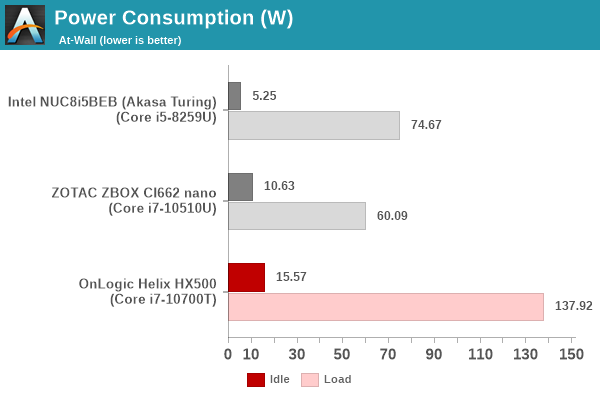
The PL1 / PL2 numbers are configured such that the instantaneous power consumption at the wall hit as much as 138W before settling down to a more comfortable (for the 120W power adapter) 60W.
Our thermal stress routine starts with the system at idle, followed by four stages of different system loading profiles using the AIDA64 System Stability Test (each of 30 minutes duration). In the first stage, we stress the CPU, caches and RAM. In the second stage, we add the GPU to the above list. In the third stage, we stress the GPU standalone. In the final stage, we stress all the system components (including the disks). Beyond this, we leave the unit idle in order to determine how quickly the various temperatures in the system can come back to normal idling range. The various clocks, temperatures and power consumption numbers for the system during the above routine are presented in the graphs below.
| OnLogic Helix HX500 System Loading with the AIDA64 System Stability Test | |||
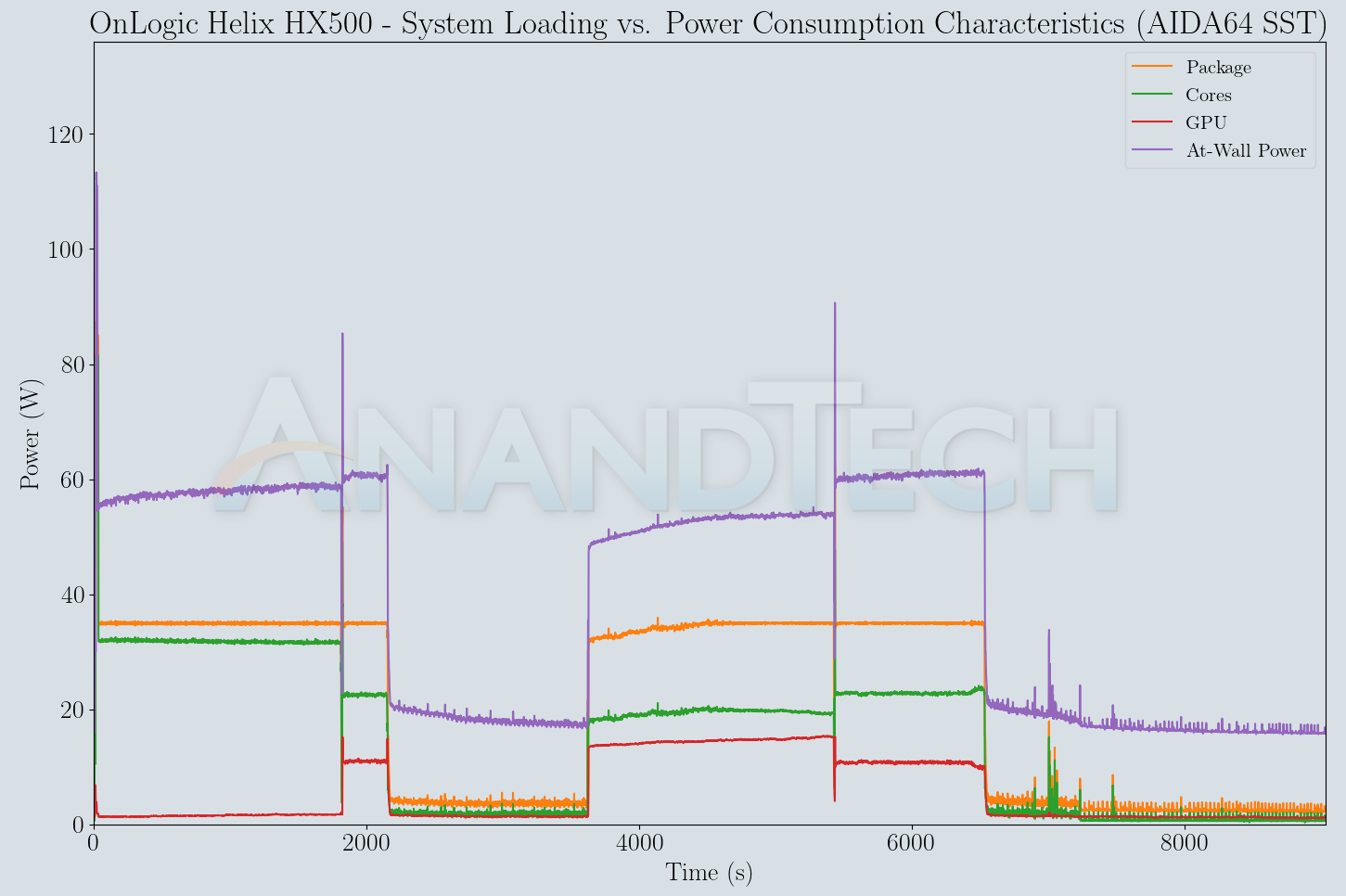
One of the unfortunate aspects during our AIDA64 SST was that the second and fourth workloads terminated in the middle without proceeding to completion. That can be observed from the power numbers above. Despite AIDA64 reporting a fatal error, the OS managed to keep running fine, as did our monitoring (evident from the full graph above, and the fact that AIDA restarted the next stress components set without issues).
Upon reaching out to OnLogic, their engineers repeated our tests, but did not manage to reproduce our findings.
After some analysis, OnLogic's engineers came to the conclusion that AIDA64 was interpreting a throttling flag as a failure. The HX500 was designed to throttle slowly starting at 95°C instead of the standard 100°C to improve reliability and the end customer experience. This allows the throttling to slowly ramp down the clocks as the high temperatures are hit when the systems are deployed in higher temperature environments. This avoids the sawtooth clocks / performance, which can negatively impact end user applications. Apparently, AIDA64 sees this as a hard failure and quits the test instead of continuing to run with the flags set by the implemented throttling mechanism.
Backing up OnLogic's claims, our custom stress test with Prime95 and Furmark had no problems in completing the workloads, while maintaining a steady 35W package power consumption, and around 60W at the wall.
| OnLogic Helix HX500 System Loading with Prime95 and Furmark | |||
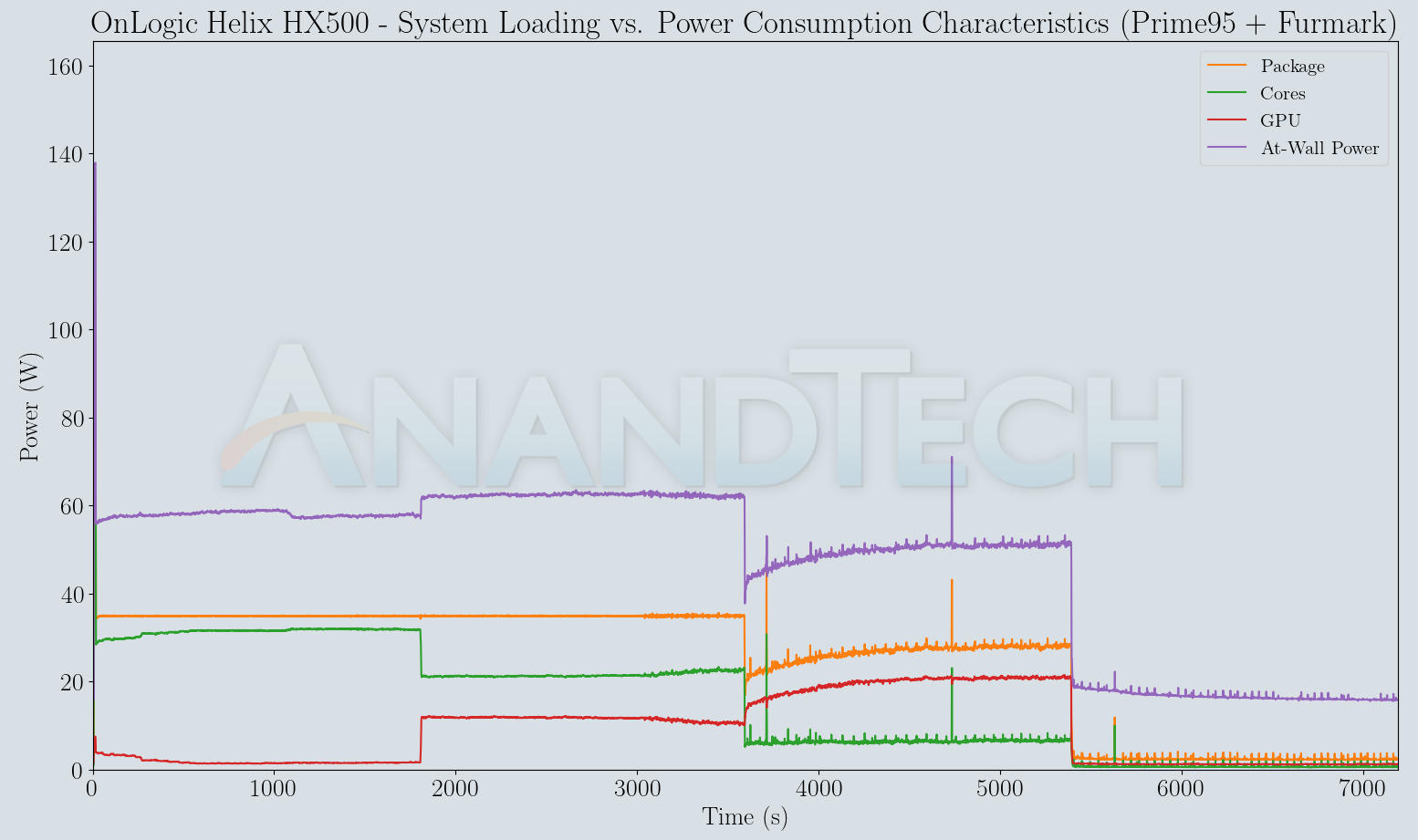
In terms of temperatures, we do end up around 98C in both our stress tests, and this matches OnLogic's own testing scenarios in their Helix manual. The key here is that the solution is able to handle 35W TDP for an extended duration (our testing is limited to around 3 hours, while the tests described in the Helix manual (PDF) run for a much longer duration).


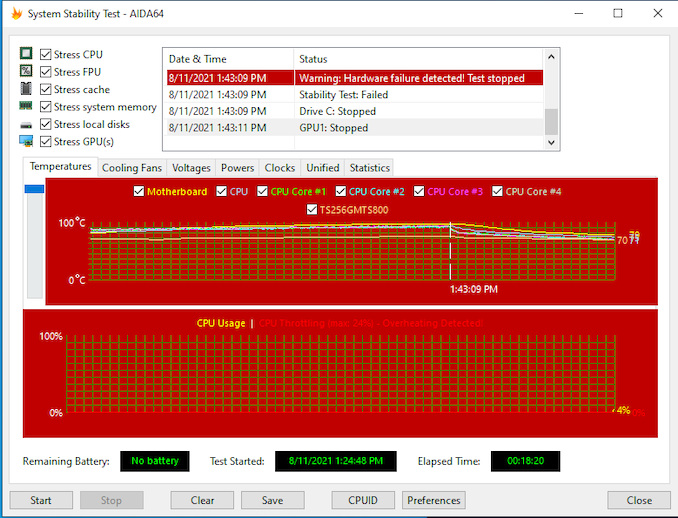
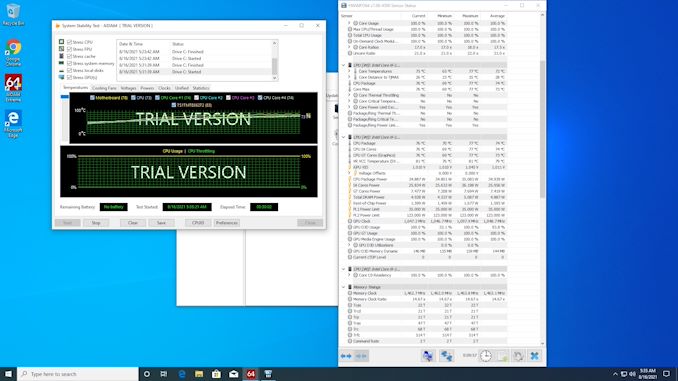








32 Comments
View All Comments
nandnandnand - Tuesday, September 21, 2021 - link
I really love the AnandTech comment system. Instead of checking for notifications, I can check the comment counts on the stories, remember the old number to see if it has gone up at all, and then skim... only to find a new spam comment.t.s - Tuesday, September 28, 2021 - link
One of the most prominent tech news site, with abysmal comment system. Nice.